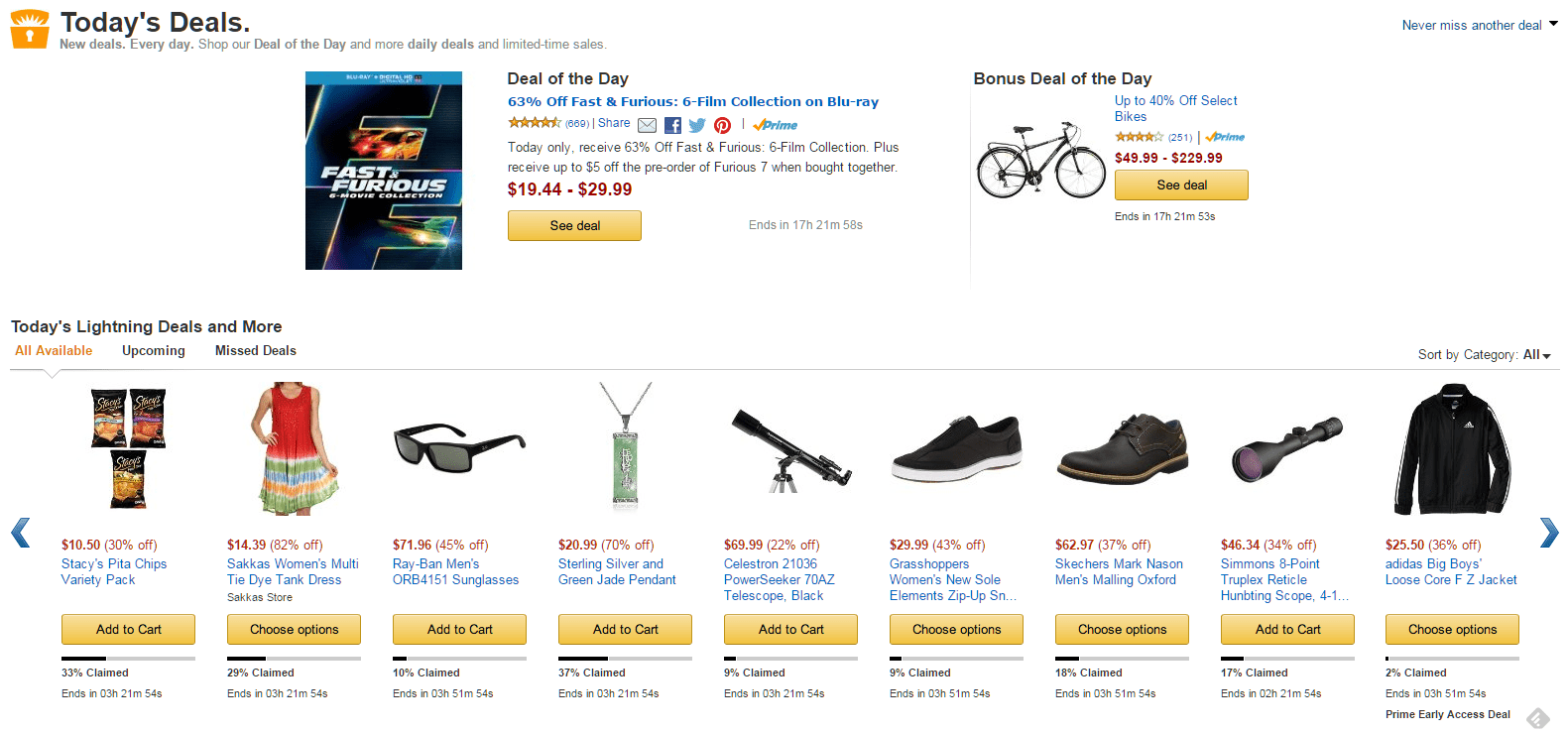Digital Customer Experience Strategy for Growth in 2025

- Focus on personalization and automation to deliver tailored experiences at scale, improving customer satisfaction and engagement.
- Implement an omnichannel strategy to ensure consistent and integrated interactions across all digital channels, enhancing customer loyalty.
- Prioritize collecting real-time customer feedback for continuous improvement and to better meet customer expectations.
- Track key performance indicators such as CSAT, NPS, and churn rate to measure the success of your digital customer experience strategy.
Delivering an exceptional customer experience is no longer optional—it's essential.

Research shows that 86% of buyers are willing to pay more for a great customer experience, yet only 1% of customers feel that vendors consistently meet their expectations.
This gap presents a significant opportunity for businesses willing to invest in a robust digital customer experience strategy.
Imagine losing a customer simply because your website's chatbot failed to provide timely assistance or experiencing high churn rates because your omnichannel strategy lacks a coherent story and consistent visual imagery. These aren't just hypothetical scenarios; they're real challenges businesses face every day, such as:
- Struggling to create a seamless omnichannel experience
- High customer churn rates due to poor digital interactions
- Difficulty in measuring the effectiveness of digital customer strategies
A holistic digital customer experience strategy can effectively address these challenges head-on. By mapping out the customer journey, integrating personalization and automation, and utilizing real-time feedback, you can create a seamless experience that drives customer satisfaction and loyalty.
What is Digital Customer Experience Strategy?
A digital customer experience strategy (DCX) is a comprehensive plan designed to enhance how customers interact with your brand across all digital touchpoints. It focuses on creating seamless, positive experiences that meet customer needs and expectations through every stage of their journey. In today's competitive landscape, a well-executed DCX strategy can significantly impact customer satisfaction, retention, and ultimately, your bottom line.
Why It's Important
The digital experience landscape is rapidly evolving, and customers are more informed and demanding than ever. They expect personalized, real-time interactions whether they're browsing your website, engaging with a chatbot, or scrolling through social media. A solid DCX strategy ensures that every digital interaction is not only consistent but also delights and engages customers.
Key Components of an Effective Digital Customer Experience Strategy
Customer Journey Mapping
Understanding the customer journey is crucial to crafting an exemplary digital customer experience. Customer journey mapping involves setting out the various touchpoints a customer encounters and who or what they interact with, from initial awareness to post-purchase engagement. This process helps identify pain points, opportunities for improvement, and areas where personalization can make a significant impact.
Omnichannel Experience
A cohesive omnichannel experience ensures that customers receive consistent and integrated interactions across all digital channels. Whether they are engaging via mobile apps, browsing your e-commerce site, or interacting on social media, the experience should be smooth and interconnected. An effective omnichannel strategy not only enhances customer satisfaction but also fosters loyalty.
Personalization and Automation
Personalization is about delivering tailored experiences to each customer based on their preferences, behavior, and past interactions. Automation tools, such as Drift for chatbots and Dynamic Yield for personalized recommendations, enable these tailored experiences at scale. When implemented correctly, these technologies can significantly enhance the customer journey by providing relevant content and offers in real time.
Real-Time Customer Feedback
Collecting and acting on real-time customer feedback is essential for continuous improvement. Tools like SurveyMonkey for online surveys, Qualtrics for comprehensive feedback solutions, and Hootsuite for social media listening platforms can provide invaluable insights into customer satisfaction and areas needing enhancement. This feedback loop helps in adjusting strategies promptly, ensuring that customer expectations are consistently met.
Measuring the Success of Your Digital Customer Experience Strategy
Metrics and KPIs to Track
To gauge the effectiveness of your digital customer experience strategy, it's crucial to monitor specific metrics and Key Performance Indicators (KPIs). These metrics provide insights into how well your strategy is performing and highlight areas that may need improvement. Key metrics to track include:
- Customer Satisfaction (CSAT): Surveys that ask customers to rate their satisfaction with your product or service.
- Net Promoter Score (NPS): Measures customer loyalty by asking how likely they are to recommend your brand to others.
- Customer Effort Score (CES): Assesses how easy it is for customers to complete a task, such as making a purchase or getting support.
- Churn Rate: The percentage of customers who stop doing business with you over a given period.
- Customer Lifetime Value (CLV): The total revenue you can expect from a single customer account.
Tools and Techniques for Effective Measurement
Utilizing the right tools can greatly enhance your ability to measure and analyze these metrics. Here are some popular options:
- Hotjar: Provides heatmaps, session recordings, and feedback polls to understand user behavior on your website.
- Google Analytics: Offers comprehensive data on website traffic, user behavior, and conversion rates.
- Qualtrics: A versatile platform for conducting surveys and gathering customer feedback.
- HubSpot: Integrates customer experience data with your CRM for a holistic view of customer interactions.
By consistently tracking these metrics and utilizing these tools, you can gain valuable insights into your digital customer experience strategy's performance and make data-driven decisions.
Examples of Successful Digital Customer Experience Strategies
To better understand how these metrics and tools come together, let's look at some examples of companies that have successfully implemented digital customer experience strategies:
- Amazon: Known for its seamless omnichannel experience and personalized recommendations, Amazon uses advanced analytics and customer data to continually optimize its customer journey.
- Netflix: Utilizes AI and machine learning to offer highly personalized content recommendations, enhancing the user experience and driving engagement.
Implementing these measurement techniques and tools can help you better understand your customers, optimize interactions, and drive continuous improvement in your digital customer experience.
Challenges and Solutions in Digital Customer Experience Strategy

Common Challenges Businesses Face
Implementing an effective digital customer experience strategy comes with its own set of challenges. Here are some common ones:
Implementing Personalization: Many businesses struggle to deliver personalized experiences at scale. The challenge lies in collecting and analyzing vast amounts of customer data to identify meaningful patterns and preferences.
Solution: Utilize advanced tools like Dynamic Yield for personalized product recommendations and HubSpot for tailored marketing automation. These platforms can help you deliver customized experiences without overwhelming your team.
Integrating Various Digital Touchpoints: Ensuring a seamless experience across multiple channels (e.g., website, mobile app, social media) can be complex and resource-intensive.
Solution: Adopt an omnichannel approach by using unified platforms that consolidate customer interactions across different channels. For example, Salesforce offers robust solutions for managing customer interactions across multiple touchpoints. This ensures a coherent and engaging customer journey.
Ensuring Quality Customer Support: Providing consistent, high-quality support through chatbots, email, and social media can be challenging, especially for businesses with limited resources.
Solution: Leverage AI-powered chatbots from providers like Drift to handle common customer inquiries efficiently. Additionally, invest in comprehensive CRM systems like Zendesk that help manage customer support tickets and improve response times.
By addressing these challenges with targeted solutions, you can enhance the effectiveness of your digital customer experience strategy. This not only improves customer satisfaction but also drives long-term loyalty and growth.
Real-World Examples and Case Studies
Successful Companies with Robust Digital Customer Experience Strategies
1. Amazon: Amazon is a great example of a company that excels in digital customer experience. Their seamless omnichannel experience ensures that customers enjoy consistent interactions whether they're shopping on the website, using the mobile app, or interacting with Alexa. Personalized recommendations powered by sophisticated algorithms enhance the user's shopping experience, leading to higher customer satisfaction and loyalty.

2. Netflix: Netflix has perfected the art of personalization. Using AI and machine learning, Netflix delivers tailored content recommendations based on user behavior and preferences. This high level of personalization keeps users engaged and reduces churn rates. Their strategy also includes tracking metrics like viewing habits and user feedback to continually refine their recommendations.

3. Starbucks: Starbucks leverages an omnichannel approach through its mobile app, website, and in-store experiences. The Starbucks Rewards program integrates seamlessly across all digital touchpoints, allowing customers to customize orders, earn rewards, and enjoy a personalized experience. Their app's user-friendly interface and effective use of customer data make Starbucks a leader in digital customer experience.

O8 Case Studies
To illustrate the effective implementation of digital customer experience strategies, let's look at some examples from O8's own clients:
1. Heraeus Medevio: We helped Heraeus Medevio implement HubSpot for a more personalized and integrated customer experience. This project involved comprehensive CRM integration and training, resulting in streamlined operations and enhanced customer satisfaction. Read the full case study to learn more.
2. Tangent Materials: Our work with Tangent Materials involved improving their SEO strategy and the management of social media content, which provided them with better visibility and more meaningful engagement with their customers. This approach significantly boosted their online presence and customer interactions. Read the case study for detailed insights.
By examining these successful implementations, you can better understand how different components of a digital customer experience strategy come together to drive measurable growth and enhanced customer satisfaction.
Looking to maximize your CX Strategy?
O8's experts can evaluate your current strategy and provide actionable insights for improvement
Digital Transformation and Customer Retention

The Role of Digital Transformation in Enhancing Customer Retention
Digital transformation is a crucial element in modernizing your customer experience strategy. By leveraging advanced technologies and integrating various digital channels, businesses can create personalized experiences that meet the evolving needs and expectations of their customers. This holistic approach not only enhances the overall customer experience but also significantly improves retention rates.
How Digital Transformation Drives Customer Retention
- Personalized Experiences: Digital transformation enables businesses to collect and analyze vast amounts of customer data in real-time. This data can be used to tailor personalized experiences across different touchpoints, whether through mobile apps, social media, or e-commerce platforms. For example, tools like HubSpot facilitate automated, personalized messaging that resonates with individual customer needs.
- Seamless Omnichannel Experience: A key aspect of digital transformation is the integration of various digital channels to provide a seamless omnichannel experience. This approach ensures that customers can engage with your brand effortlessly, whether they are in-store, online, or using mobile apps. Consistent and coherent interactions across these channels enhance customer satisfaction and loyalty.
- Enhanced Customer Support: Automation and AI-powered tools, such as chatbots and customer relationship management (CRM) systems like Zendesk, play a vital role in improving customer support. By offering quick resolutions and personalized assistance, these tools enhance the user experience, making it easier for customers to get their needs met without friction.
- Actionable Customer Feedback: Digital transformation also focuses on gathering and acting on customer feedback. Platforms like Qualtrics allow businesses to conduct comprehensive surveys and gain insights into customer satisfaction (CSAT) and net promoter scores (NPS). This feedback helps in fine-tuning strategies and ensuring that customer needs are consistently addressed.
- Predictive Analytics and Customer Behavior: Using machine learning and predictive analytics, businesses can anticipate customer behavior and proactively address potential issues. This proactive approach helps reduce churn rates and ensures that customers continue to have positive interactions with your brand.
By embracing digital transformation, businesses can create a customer-centric strategy that not only optimizes digital interactions but also drives long-term retention and loyalty. This integrated approach ensures that every touchpoint, from social media to mobile apps, contributes to a seamless and satisfying customer journey.
Digital CX and CX Strategy: Elevating Your Customer Experience
Digital Customer Experience (Digital CX) encompasses all the digital interactions a customer has with your brand. These interactions can occur across various digital touchpoints such as websites, mobile apps, social media, and more. The goal of a robust Digital CX strategy is to ensure that these interactions are seamless, personalized, and satisfying, leading to enhanced customer loyalty and retention.
Crafting an Effective CX Strategy
Creating a comprehensive CX strategy involves several key components designed to optimize the overall customer experience:
- Metrics and KPIs: Tracking relevant metrics such as Net Promoter Score (NPS), Customer Satisfaction (CSAT), and customer churn rates is essential. These metrics provide valuable insights into the effectiveness of your CX strategy. Utilizing tools like Google Analytics can help monitor these metrics in real-time.
- Personalized Messaging: Tailoring your communication to meet individual customer needs is critical. Personalized messaging can be delivered via CRM systems like HubSpot, ensuring that each customer receives relevant and timely information.
- Customer-Centric Approach: A successful CX strategy places the customer at the center of all initiatives. This involves understanding customer expectations and designing interfaces that are intuitive and user-friendly. By adopting a customer-centric mindset, businesses can create memorable digital interactions that foster long-term relationships.
- Seamless Experience: Ensuring a seamless experience across different channels is vital. This includes integrating online channels with in-store experiences to provide a cohesive customer journey. Utilizing digital experience platforms like Adobe Experience Cloud can streamline these efforts, making it easier to manage and optimize the overall experience.
- Self-Service and AI Integration: Incorporating self-service options and artificial intelligence (AI) can greatly enhance the customer experience. AI-powered bots and self-service portals allow customers to resolve issues quickly and efficiently, reducing friction and increasing satisfaction.
- Customer Feedback and Journey Mapping: Gathering customer feedback through platforms like Qualtrics and conducting customer journey mapping are essential for continuous improvement. These practices help identify pain points and areas for enhancement, ensuring that the CX strategy evolves with changing customer needs.
- Proactive Customer Management: Effective digital customer experience management involves being proactive rather than reactive. This means using predictive analytics to anticipate customer behavior and address issues before they escalate. By understanding customer personas and tailoring the experience accordingly, businesses can create a more engaging and satisfying journey.
By focusing on Digital CX and crafting a thorough CX strategy, businesses can elevate their customer experience to new heights. This comprehensive approach not only addresses current customer needs but also anticipates future expectations, ensuring a great digital customer experience that stands out in the competitive digital world.
Ready to Enhance Your Digital Customer Experience?
Contact O8 today for a tailored strategy that meets your unique needs and drives measurable results
In today's digital age, delivering an exceptional customer experience is paramount to achieving long-term success. A well-crafted digital customer experience strategy can transform how customers interact with your brand, ensuring that each touchpoint is optimized for satisfaction and engagement. By focusing on key components like personalized messaging, seamless omnichannel experiences, and real-time customer feedback, you can create a customer-centric approach that drives loyalty and retention.
Are you ready to transform your digital customer experience strategy? At O8, we specialize in crafting customized strategies that drive measurable growth and enhance customer satisfaction. Contact us today to learn how we can help you create a seamless and engaging digital experience for your customers.








